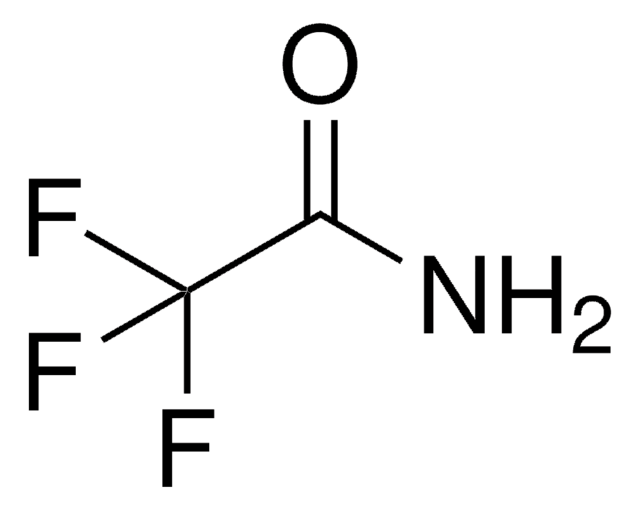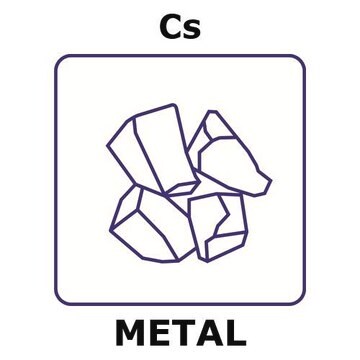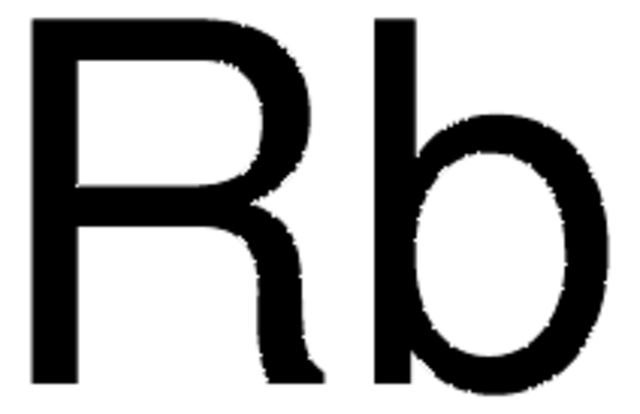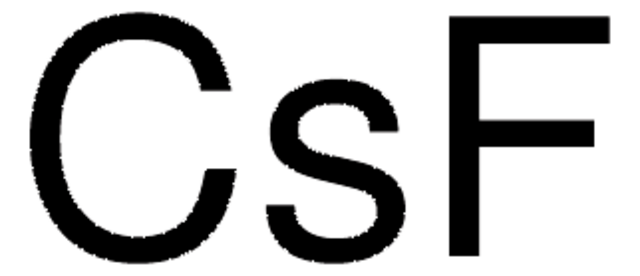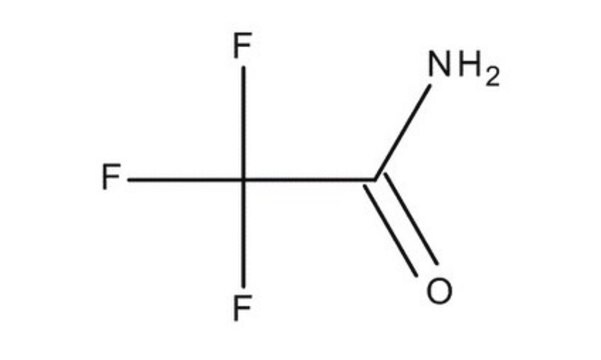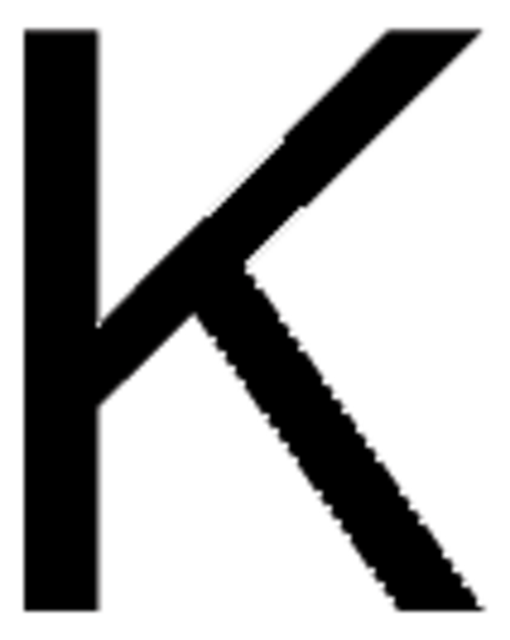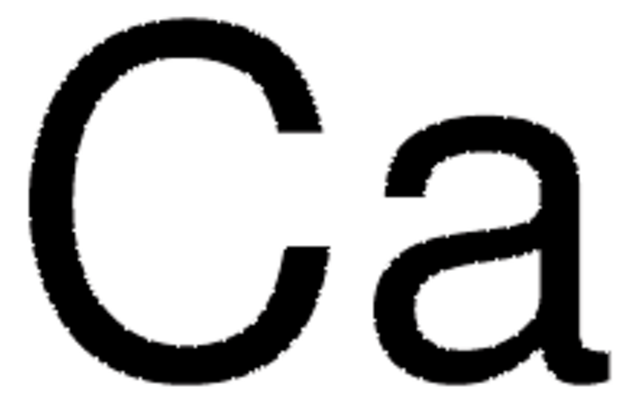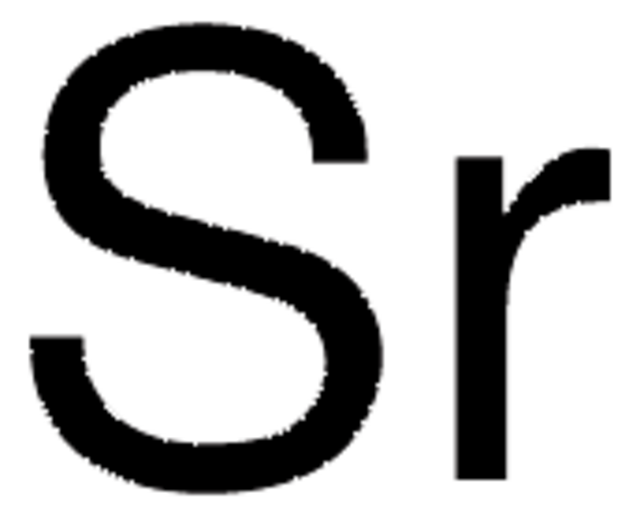Wichtige Dokumente
239240
Cäsium
ingot, ≥99.95% trace metals basis
Synonym(e):
Caesium
About This Item
Empfohlene Produkte
Dampfdruck
1 mmHg ( 279 °C)
Qualitätsniveau
Assay
≥99.95% trace metals basis
Form
ingot
Eignung der Reaktion
reagent type: reductant
Verpackung
pkg of Packaged in: Breakseal Ampule
Widerstandsfähigkeit
19 μΩ-cm, 0°C
bp
705 °C (lit.)
mp (Schmelzpunkt)
28.5 °C (lit.)
Dichte
1.873 g/mL at 25 °C (lit.)
SMILES String
[Cs]
InChI
1S/Cs
InChIKey
TVFDJXOCXUVLDH-UHFFFAOYSA-N
Suchen Sie nach ähnlichen Produkten? Aufrufen Leitfaden zum Produktvergleich
Allgemeine Beschreibung
Anwendung
- Cesium-containing triple cation perovskite solar cells: improved stability, reproducibility and high efficiency: Demonstrates how adding cesium to perovskite solar cells improves their stability and efficiency, making a significant advancement in solar technology (M Saliba et al., 2016).
- Exotic stable cesium polynitrides at high pressure: Explores the formation of new cesium polynitrides under high pressure, indicating potential applications in high-energy-density materials (F Peng et al., 2015).
Signalwort
Danger
H-Sätze
Gefahreneinstufungen
Skin Corr. 1B - Water-react 1
Zusätzliche Gefahrenhinweise
Lagerklassenschlüssel
4.3 - Hazardous materials which set free flammable gases upon contact with water
WGK
WGK 3
Flammpunkt (°F)
Not applicable
Flammpunkt (°C)
Not applicable
Persönliche Schutzausrüstung
Eyeshields, Faceshields, Gloves, type P3 (EN 143) respirator cartridges
Hier finden Sie alle aktuellen Versionen:
Besitzen Sie dieses Produkt bereits?
In der Dokumentenbibliothek finden Sie die Dokumentation zu den Produkten, die Sie kürzlich erworben haben.
Kunden haben sich ebenfalls angesehen
Unser Team von Wissenschaftlern verfügt über Erfahrung in allen Forschungsbereichen einschließlich Life Science, Materialwissenschaften, chemischer Synthese, Chromatographie, Analytik und vielen mehr..
Setzen Sie sich mit dem technischen Dienst in Verbindung.